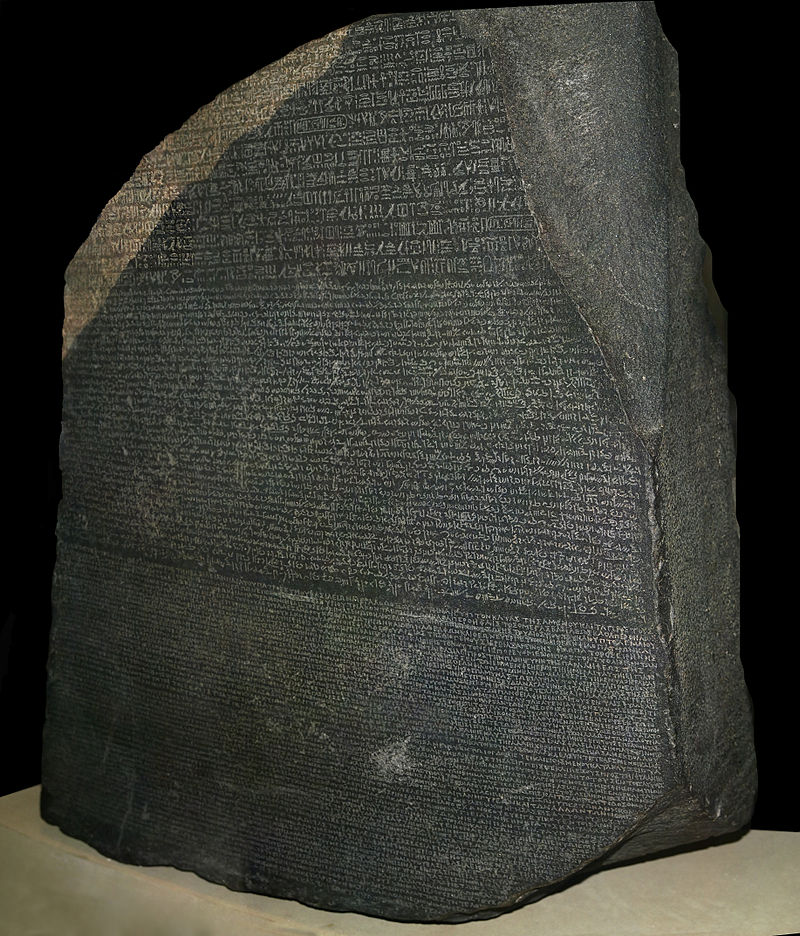A French soldier, serving in the desert about 35 miles north of Alexandria on Napoleon Bonaparte's Egyptian campaign, stumbled over a black basalt slab protruding from the sand on July 19th, 1799.
Little did he know it, but that discovery 220 years ago today would provide the key to unlocking an ancient written language not used for 2,000 years, and with it many of the secrets of a lost civilisation. The irregularly shaped basalt slab was named after the nearest town – the 'Rosetta Stone'.
 Although incomplete, it was inscribed with fragments of the same passages written in three different scripts; Ancient Greek, Egyptian hieroglyphics and Egyptian demotic. Only the Greek could be partially understood, telling archaeologists that the stone was inscribed by priests honouring King Ptolemy V in 196 BC.
Although incomplete, it was inscribed with fragments of the same passages written in three different scripts; Ancient Greek, Egyptian hieroglyphics and Egyptian demotic. Only the Greek could be partially understood, telling archaeologists that the stone was inscribed by priests honouring King Ptolemy V in 196 BC.
But crucially, the Greek passage also announced that the three scripts were all of identical meaning. It meant that, for the first time, archaeologists had the key to deciphering ancient Egyptian written languages which had been "dead" for two millennia. Using the Rosetta Stone they could finally begin to understand the ancient hieroglyphics found in pyramids, tombs and other monuments whose meaning had so far eluded them. However, it would be another two decades before the stone gave up its secrets.
Luckily the soldier who found the slab, measuring almost four feet long by two-and-a-half feet wide, knew of his Emperor's keen interest in recovering cultural artefacts. Napoleon had even taken a group of scholars on his campaign to analyse what they found, though they failed to recognise the true significance of the find.
When the British defeated Napoleon in 1801, they seized the Rosetta Stone along with many other artefacts. English scholar Thomas Young made the startling realisation of what the stone could do, but it was French Egyptologist Jean-Francois Champollion who ultimately cracked the code in 1822, more than 20 years after its discovery. Over many years he had taught himself several ancient languages and was able to use his knowledge of Greek as a guide in the laborious work.
He realised that the picture-text of hieroglyphics represented not just actual objects, but also sounds and groups of sounds, in much the same way as the modern alphabet. Deciphering the Rosetta Stone opened up the language and culture of ancient Egypt as never before, showing it to be an extremely advanced civilisation.
Since 1802 the Rosetta Stone has been housed at the British Museum in London, except for a period during the First World War when it was temporarily moved to a safe underground location due to the threat of bomb damage.
